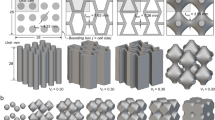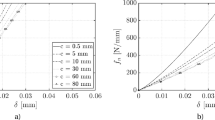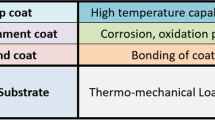Abstract
The mechanical properties of Composite solid propellant (CSP) are the critical material parameters to analyze the structural integrity of propellant grains, and have a significant influence on the life and reliability of solid rocket motors. A Voronoi cell finite element method using an adaptive algorithm in the time domain is proposed for investigating the linear viscoelasticity of CSP in the present paper. A process is brought forward to produce a Representative volume element (RVE) model, which reflects the microstructural features of CSP. Numerical viscoelastic examples are used for varying the accuracy of this method. In addition, finite element simulations are conducted to understand the effect of microstructural morphology and material properties of inclusion on the effective mechanical properties of CSP using the new method. When this method is applied to the design process of CSP, it can reduce the design cost and shorten the design cycle effectively. The current microscopic numerical analysis method can be used to provide guidance for designing and analyzing the mechanical properties of composite viscoelastic materials.
Similar content being viewed by others
References
F. Xu, N. Aravas and P. Sofronis, Constitutive modeling of solid propellant materials with evolving microstructural damage, Journal of the Mechanics and Physics of Solids, 56 (2008) 2050–2073.
P. J. Batz, On the microstructure of composite propellants, Solid Rocket Structural Integrity Abstracts, 3 (1966) 1–18.
J. Buckmaster, T. L. Jackson, A. Hegab, S. Kochevets and M. Ulrich, Randomly packed heterogeneous propellants and the flames they support, 39th AIAA Aerospace Sciences Meeting & Exhibit, Reno (2001) 1–25
G. M. Knott, T. L. Jackson and J. Buckmaster, Random packing of heterogeneous propellants, AIAA Journal, 39 (2001) 678–686.
Stany and Gallier, Numerical modeling of dielectric breakdown in solid propellant microstructures, Journal for Multiscale Computational Engineering, 8 (2010) 523–533.
S. J. Zhi, B. Sun and J. W. Zhang, Multiscale modeling of heterogeneous propellants from particle packing to grain failure using a surface-based cohesive approach, Acta Mechanica Sinica, 28 (2012) 746–759.
H. W. Zhang and H. Wang, Parametric variational principle based elastic-plastic analysis of the heterogeneous materials with Voronoi finite element method, Applied Mathematics and Mechanics (English Edition), 27 (2006) 1037–1047.
S. Ghosh and S. N. Mukhopadhyay, A two-dimensional automatic mesh generator for finite element analysis for random composites, Computers and Structures, 41 (1991) 245–256.
S. Ghosh and S. N. Mukhopadhyay, A material based finite element analysis of heterogeneous media involving Dirichlet tessellations, Computer Methods in Applied Mechanics and Engineering, 104 (1993) 211–247.
S. Ghosh, Micromechanical Analysis and Multi-scale modeling Using the Voronoi Cell Finite Element Method, CRC press, Florida (2011).
P. Vena and D. Gastaldi, A Voronoi cell finite element model for the indentation of graded ceramic composites, Composites, 36 (2005) 115–126.
H. Yang, A new approach of time stepping for solving transfer problems, Communications in Numerical Methods in Engineering, 15 (1999) 325–334.
J. Cho, Voronoi diagram and microstructure of weldment, Journal of Mechanical Science and Technology, 29 (2015) 371–374.
Y. You, S. Kou and S. Tan, A new approach for irregular porous structure modeling based on centroidal Voronoi tessellation and B-spline, Computer-Aied Design and Applications, 13 (2016) 1–6.
Y. Ren and H. Yang, Equivalent analysis of orthogonal viscoelastic jointed rock via an adaptive algorithm in time domain, Finite Elements in Analysis & Design, 46 (2010) 875–888.
N. Zheng, An adaptive voronoi algorithm in time domain for viscoelastic inclusion problem, Dalian University of Technology, Dalian (2011) (in Chinese).
L. Bruno, F. M. Furgiuele and C. Maletta, A hybrid method for the thermo-mechanical analysis of elastic cracks in twodimensional heterogeneous materials, Finite Elements in Analysis and Design, 43 (2007) 444–452.
J. W. Zhang, S. J. Zhi and B. Sun, Estimation of thermophysical properties of solid propellants based on particle packing model, Science China Technological Sciences, 56 (2013) 3055–3069.
Author information
Authors and Affiliations
Corresponding author
Additional information
Recommended by Associate Editor Kyeongsik Woo
Liu-Lei Shen received his B.S. degree from National University of Defense and Technology (NUDT) in 2014. And he is currently a Ph.D candidate at the college of Aerospace Science and Engineering, NUDT. His research interests the cross-scale analysis of particles reinforced materials.
Zhi-Bin Shen received his Ph.D. at National University of Defense and Technology (NUDT) in 2012 and now he is an Associate Professor in NUDT. His research interests are mechanical properties of viscoelastic material, finite element analysis, etc.
Rights and permissions
About this article
Cite this article
Shen, LL., Shen, ZB., Li, HY. et al. A Voronoi cell finite element method for estimating effective mechanical properties of composite solid propellants. J Mech Sci Technol 31, 5377–5385 (2017). https://doi.org/10.1007/s12206-017-1032-1
Received:
Revised:
Accepted:
Published:
Issue Date:
DOI: https://doi.org/10.1007/s12206-017-1032-1




